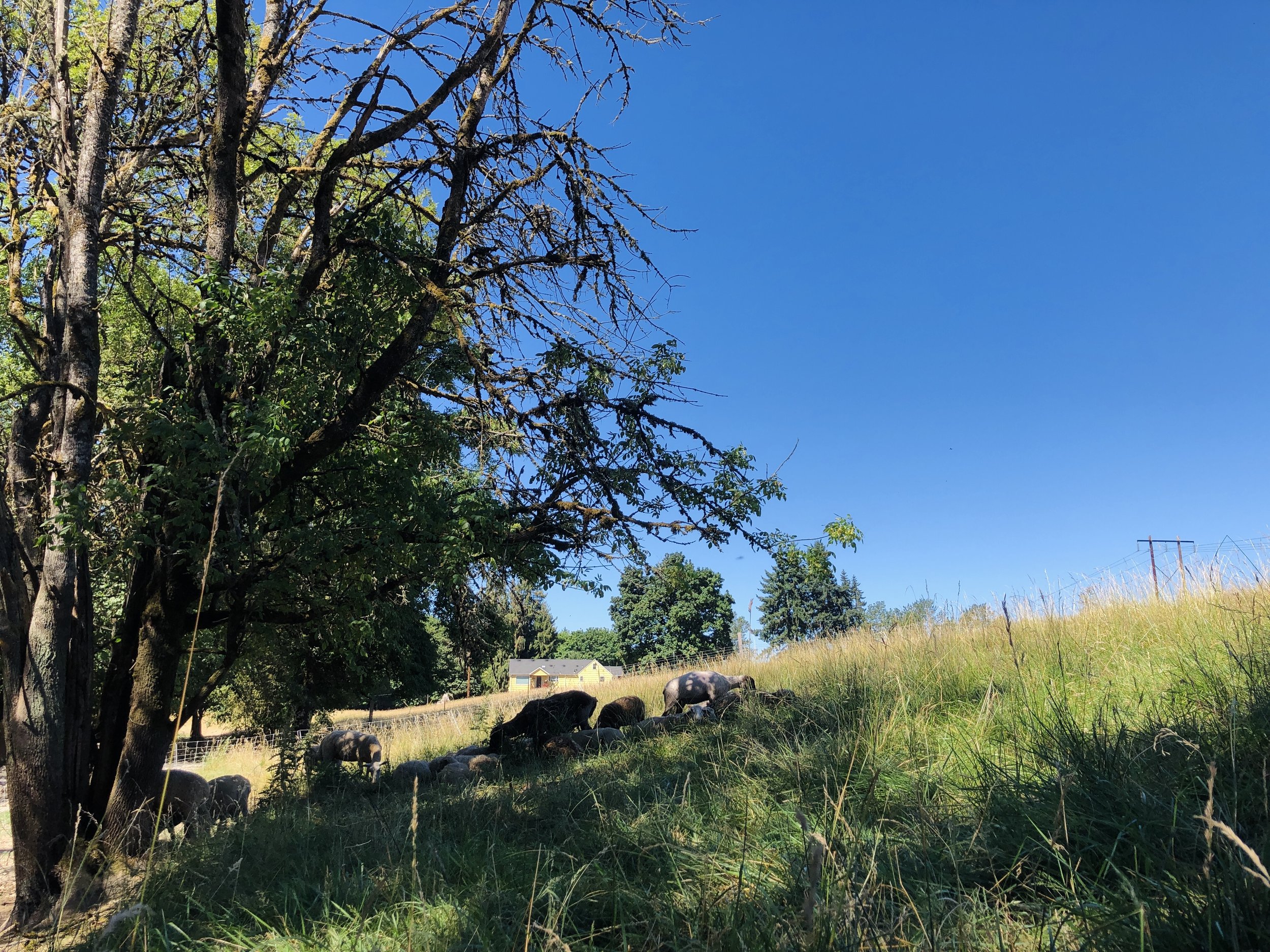Know How Your Food is Raised.
Summer is all about shade.
Transparency and Honesty. Two values producers of food should have…
When you walk into the grocery store looking for meat that was raised in a way that is healthy to consume, and healthy for the environment, you rely on marketing labels. Some hold teeth, most don’t. But even the ones that do have tons of loopholes that are exploited every day. It’s a constant game of whack-a-mole that “sustainable” industries try and squelch with more regulation.
The only real way to KNOW is to know your farmer…which is why I suspect you are here.
So in a complete effort of honesty and transparency, this is what goes into my lambs, and how they are raised…
My lambs live on their mother’s milk for the first few weeks of life until they are able to feed on grass and other forages of my pastures where they are born (not in a barn). They are self-weaned by their mothers and spend their lives on pasture, fattening up on grasses available. A mineral lick is always available to them free-choice. Leading up to slaughter, the lambs are finished on pumpkins both grown on site, and bought from local farms. I like to have a bit of hay as a backup for mid-winter feeding when I need to buy time to allow grass to catch up. I buy it locally and try to find herbicide-free hay.
At around a month or so old, I castrate the male lambs by banding them. It’s visibly uncomfortable for them for about 10 minutes until they lose feeling, and forget it happened. This allows me to leave them with their mothers, further reducing stress. I also band the tails of replacement females. This is commonly done to prevent filth from accumulating in their tail wool and getting in the way of nursing lambs later on with a risk of infection. Like the castration, it’s visibly uncomfortable for about 10 minutes and then they act like it never happened.
About 4 weeks before the mothers lamb in the spring, I give them a common vaccination for a clostridial bacteria that lives naturally in the soil. Under the right conditions, it can kill lambs. I also vaccinate them for tetanus. I then give the lambs a booster about a month after birth. This past year (2023), I only vaccinated about 2/3 of the flock. Next year I’ll do about half and see where that leads me.
I use antibiotics as a last-resort measure for common hoof problems in the ewe flock. I don’t use them on pregnant or lactating females, and never have/will use them on a lamb meant for consumption. Those sheep that are treated are marked down, and will eventually be culled from the flock.
Sheep are known to have problems with internal parasites. To keep their parasite loads in check, I rotate them constantly through the pastures. When signs of heavy parasite loads are noticeable on certain ewes, I will check them for anemia, a sign they have a lot of parasites. I then only treat the ones struggling with a dewormer that is allowed for use in organic regulations. I never have/will use it on animals meant for consumption, and sheep that routinely need it as an intervention are also marked to eventually be sold off.
My sheep are constantly rotated around the pastures to: 1. manage grass/ecosystem health, and 2. maintain flock health. They constantly get fresh ground to live on, so they are not left to their own filth. They spend 364 days a year out on pasture and only come into the barn the night before shearing once a year.
That’s it, that’s all. I try and keep an open-door policy, and if you want to come and look and tour for yourself, I would love to coordinate that as best as I can.
This is my pact with you between a producer and a consumer.
After all, my family cares where our meat comes from, and we source it from this land ourselves as well.





